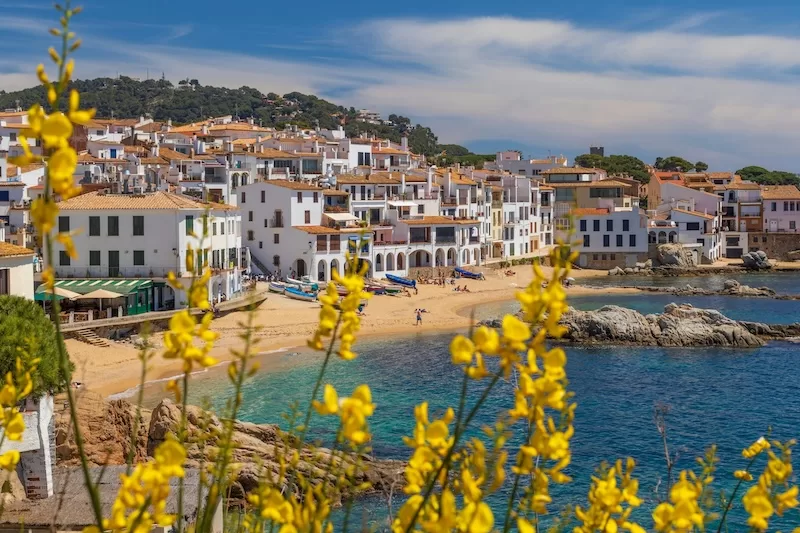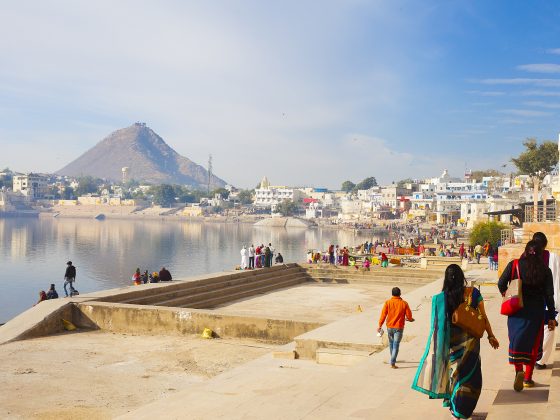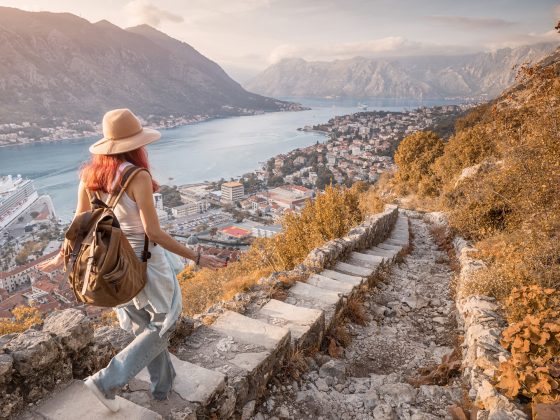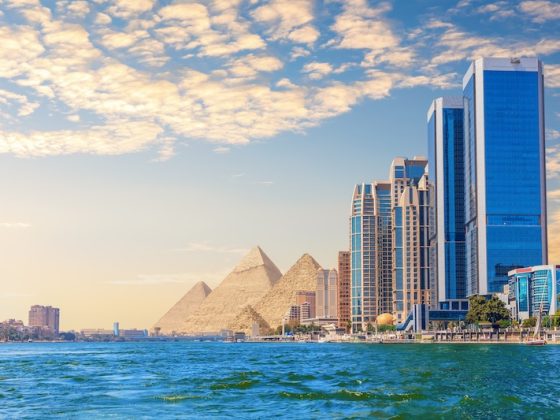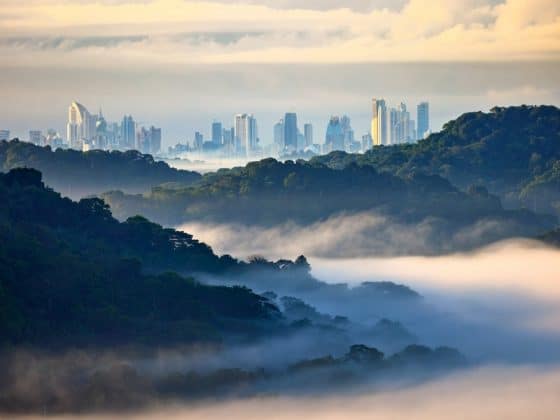Introduction
Many retirees dream of spending their golden years in warmer climates, lower costs, or more relaxed cultures. For those seeking long-term legal residency abroad, one of the first questions is: which countries with retirement visa programs will accept you?
In this guide, we’ll explore the countries currently offering retirement or passive-income visas, compare their eligibility rules, costs, and benefits, and help you choose the best path forward.
Your goal might be to live a European seaside life or a in a tropical retreat in Southeast Asia. Whatever the case, understanding the visa landscape is your first step toward retiring abroad confidently.
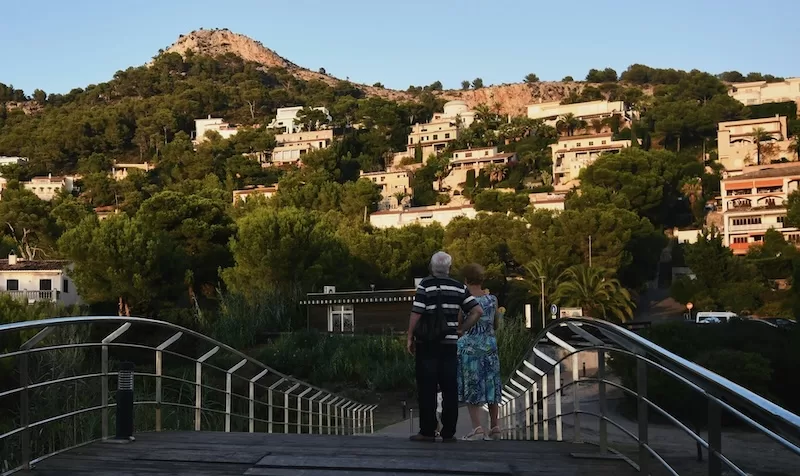
What Is a Retirement Visa?
Definition & Purpose
A retirement visa (sometimes called a “pensioner visa” or “passive income visa”) is a residency scheme offered by certain countries to foreign nationals who are retired (or able to live off passive income, such as a pension or investments). Its purpose is to allow these individuals to legally live in that country long-term, often without engaging in employment. Not all countries use the term “retirement visa,” but many have equivalent permits for nonworking retirees.
Common Eligibility Criteria
While the specifics differ by country, most retirement visas require some combination of:
- Minimum age (e.g. 50, 55, or none but proof of retirement or passive income)
- Proof of stable income or pension (often a fixed monthly amount)
- Health insurance valid in the host country
- Clean criminal record / background check
- Minimum stay or proof of lodging / accommodation
- Renewal or periodic financial proof
- Sometimes investment or deposit requirements, e.g. local fixed deposit or property purchase
Because conditions differ widely, always check the latest official immigration site or legal adviser for each country.
Why Retire Abroad?
- Lower cost of living — Many popular retiree destinations have significantly lower living costs. From seaside apartments to mountain-view homes, your money stretches further in many retirement-friendly countries.
- Quality healthcare — World-class hospitals, English-speaking doctors, and private care that won’t drain your savings: affordable healthcare is one of the biggest perks of life overseas.
- Climate & lifestyle — Swap winters for endless summers, long commutes for morning walks by the beach, find community, and rediscover time for hobbies that make you feel alive.
- Tax perks & incentives — Many retirement visa programs come with friendly tax structures, exemptions on foreign income, and incentives designed to help your nest egg grow.
- Cultural enrichment & travel — A new country means new flavors, festivals, friendships, and the thrill of discovering something extraordinary in everyday life.
According to the Global Retirement Report 2025, the Americas account for 36% of global passive-income or retirement visa programs, with Europe close behind at 32%, showing that retirees have more choices than ever before when it comes to living well, far from home.

Top Countries with Retirement Visa Programs (2025)
Below are key regions and countries that offer retirement-style visas. Each section includes a brief overview of main requirements and characteristics unique to each country and visa.
Europe
Portugal – D7 / Passive Income Visa
Portugal’s D7 visa (often used by retirees) is widely considered one of the most accessible and appealing in Europe. This visa is designed for individuals who are financially independent and can support themselves without working in Portugal.
- Requirements: proof of passive income (or pension) of roughly €8,460/year for the main applicant plus ~€4,230 for spouse (as guideline), health insurance, clean record.
- Validity / Renewal: initial 1 year, then renewable for 2-year periods; possibility of permanent residence or citizenship after five years.
- Benefits: access to Schengen Area, strong healthcare system, stable economy, high quality of life, option to become a non-habitual resident of Portugal for tax purposes (little or no tax for 10 years).

Spain – Non-Lucrative Visa
Spain’s non-lucrative visa is a well-known pathway for retirees, though it comes with stricter financial rules than Portugal’s D7. Applicants must show a minimum annual income of €25,816, plus additional funds for dependents. Unlike Portugal, Spain rarely accepts remote work income, and most consulates require proof of a pension or passive income such as investments or savings. For those aiming for EU citizenship, Spain’s timeline is longer: 10 years of continuous residency before you can apply. And since Spain generally doesn’t allow dual citizenship, applicants must be prepared to renounce their original nationality when taking this route.
- Requirements: proof of substantial recurring income (often more than €25,816/year) plus additional funds per dependent, private health insurance.
- Validity: usually granted for 1 year then renewable for two-year periods
- Considerations: cannot work locally under this visa; Spain also is revisiting its Golden Visa program.
Greece, Italy, Malta, Cyprus
- Greece offers a “retirement visa” under categories of residence permit for financially independent individuals.
- Italy has an elective residence visa that suits retirees who can demonstrate stable income sources.
- Malta provides a residency program tailored for retirees, often combining tax-friendly rules with access to EU.
- Cyprus has a Category F Visa, intended for persons who can live permanently in Cyprus without working.
What begins as a retirement visa can easily become something bigger. In many parts of Europe, a few peaceful years abroad can lead to permanent residency and the privilege of EU citizenship, turning your dream of living overseas into a lifelong home.
Americas & Central America
Panama – Pensionado Program
One of the most famous retiree visa programs and for good reason. The country offers year-round warmth, welcoming communities, and a cost of living noticeably lower than most U.S. cities. While the financial incentives under the program are impressive, what truly sets Panama apart is its balance of comfort and culture. Retirees enjoy modern amenities, reliable infrastructure, and access to a vibrant expat network, all while experiencing the laid-back rhythm of Latin America.
- Requirements: a guaranteed pension or retirement income of at least USD $1,000/month (or $250 more for spouse).
- Benefits: access to discounts on utilities, healthcare, public transport, and reduced taxes for retirees.
- Residency: often leads to permanent residence after some years.
Costa Rica – Pensionado / Rentista
Costa Rica offers an easygoing lifestyle defined by its famous pura vida spirit, a culture that values balance, connection, and the good life. From rainforests to beaches, the country combines natural beauty with a stable democracy, excellent healthcare, and strong environmental values.
- Pensionado: proof of minimum monthly pension (about USD $1,000)
- Rentista: fixed income from investments (e.g. $2,500/month for two years)
- Renewals every two years.
Mexico – Temporary / Permanent Resident (Retirement Route)
Mexico doesn’t call it a “retirement visa,” but many retirees qualify via the Temporary Resident Visa category, then convert to Permanent Resident after 4 years.
- Requirements: show monthly income or savings threshold depending on the consulate.
- Advantage: full residency status with many of the same rights as citizens.
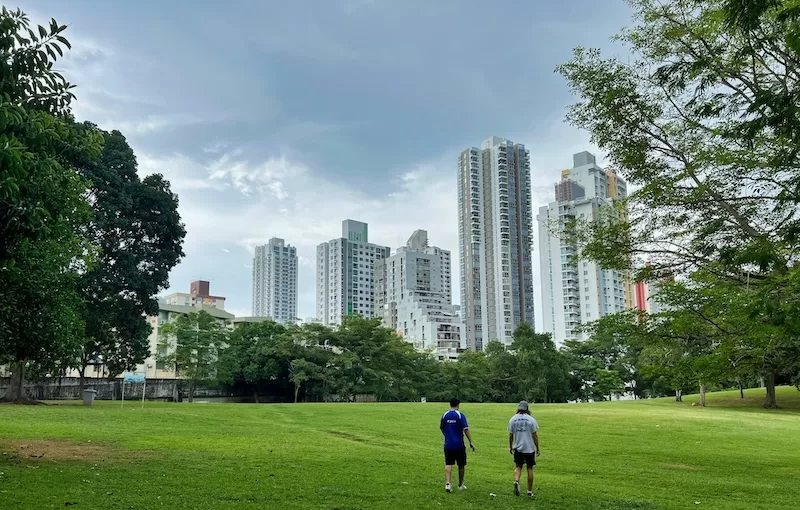
South America: Ecuador, Colombia, Uruguay
- Ecuador has a “retirement visa” (Visa 9-II), a temporary residence authorization granted by the Ecuadorian government to foreign retirees who wish to settle in the country and whose source of income is a retirement pension from public or private institutions based abroad.
- Colombia’s M-11 retirement visais a straightforward and affordable option for those looking to spend their retirement in South America. Applicants need to show a monthly pension of at least three times the national minimum wage (around USD $1,000 in 2024) from social security, a government pension, or a private fund. With no age restriction and an easy path to long-term residency, this retirement visa allows foreigners to enjoy Colombia’s rich culture, modern amenities, and relaxed cost of living.
- Uruguay allows long-term residence via rentista / pensionado categories, though documentation and process can be more bureaucratic.
Asia & Oceania
Malaysia – MM2H (Malaysia My Second Home)
One of the more flexible programs in Asia. What makes MM2H stand out is its balance of affordability, comfort, and modern infrastructure. Malaysia offers excellent healthcare, tax exemptions on foreign income, and the freedom to own property and import personal belongings duty-free under certain conditions. With its English-friendly environment, diverse culture, and world-class amenities in cities like Kuala Lumpur and Penang, Malaysia gives retirees the freedom to settle into a high-quality lifestyle without the high cost.
- Eligibility: age 35+, proof of liquid assets and monthly income, and fixed deposit or real estate investment in many cases.
- Validity: visa granted for 5 to 20 years (varies by tier).
- Perks: foreign-sourced income often exempt from Malaysian taxes, ability to bring dependents, comfortable infrastructure.
Thailand – Non-Immigrant O-A / O-X Visas
- O-A (Long Stay / Retirement Visa): is for those aged 50 and over who wish to stay in Thailand for up to one year without working, requiring bank deposit (~800,000 THB), monthly income or pension, and health insurance.
- O-X (Longer-term option): 10-year visa for selected nationals in later years.
- Renewals: annual or multi-year options exist.
Indonesia, Philippines
- Indonesia: offers retirement visas that can be renewed, often requiring proof of income, local sponsor, lodging, and health insurance. Expats looking to retire in Indonesia and extend their stay for up to 5 years can apply for the Silver Hair Visa Indonesia. Expats with age above 55 years old who are able to prove a statement of their minimum monthly pension fund of USD 3,000$ can apply for the five year scheme of retirement KITAS.
- Philippines: the Special Resident Retiree Visa (SRRV) is a long-term residency option that allows foreigners to live indefinitely in the country once they meet the minimum deposit or pension income requirements. Managed by the Philippine Retirement Authority (PRA), this special non-immigrant visa is designed for both international retirees and former Filipino citizens seeking to return home.
Other Oceania countries may have special permits or investor-retirement pathways, though many restrict direct retirement visas.
Africa & Middle East
South Africa – Retired Person Visa
South Africa offers a Retired Person Visa for foreigners who can demonstrate a steady income from pensions, annuities, or asset holdings. It’s ideal for retirees seeking a mild climate, affordable cost of living, and a vibrant mix of cultures. Holders of this visa can stay for up to four years at a time, with the option to renew, making it a flexible base for long-term living.
UAE / Dubai
While not always labeled a “retirement visa. the United Arab Emirates, particularly Dubai, has opened its doors to retirees through its Golden Visa program, a long-term residency option that rewards financial stability and investment. Applicants typically qualify by meeting specific savings or property ownership thresholds. The appeal lies in Dubai’s world-class infrastructure, safety, and modern conveniences, paired with tax-free living and year-round sunshine.
Mauritius
In the Indian Ocean, Mauritius has been emerging as one of the most attractive destinations for retirees. Through its Retired Non-Citizen Residence Permit, foreigners over 50 can reside in the country by proving a modest monthly income transferred from abroad. The island’s political stability, strong healthcare system, and reputation for safety make it especially appealing. Add its turquoise lagoons, multilingual society, and relaxed pace of life, and Mauritius offers retirees a blend of tropical beauty and modern comfort that’s hard to match.
Read more like this: Getting There: Your Guide to 3 Top Retirement Destinations
Comparative Analysis: Requirements, Costs & Best Fit
Below is a simplified comparison, but you should always verify with official sources before applying.
| Region / Country | Approx. Income Requirement* | Validity / Renewal | Benefits / Drawbacks |
| Portugal (D7) | ~€8,460 + allowances | 1 year → renewals | Access to EU, stable, lower threshold |
| Spain | ~€25,816+ | 1 year → 2-year renewals | Higher income threshold, good climate |
| Panama | US$1,000 pension | Permanent / long-term | Very attractive retiree incentives |
| Costa Rica | US$1,000 pension (Rentista more) | 2-year renewals | Stable, nature, good health system |
| Mexico | Varies by consulate | 1–4 years → permanent | Flexible, close to U.S. |
| Malaysia (MM2H) | Liquid assets + monthly income | 5 to 20 years | Tax perks, modern infrastructure |
| Thailand | 800,000 THB deposit + income | 1 year, renewed | Tropical lifestyle, warm climate |
* “Income requirement” is approximate and may depend on consulate, sharing, or dependents.
Choosing a retirement visa is like choosing a long-term lease on a home: you compare affordability (rent/income), location (country), terms (length, renewal), and extras (amenities, tax breaks). The best “home” for you depends on your finances, lifestyle, and desired region.
In practice, a retiree on a modest pension might find Portugal or Malaysia fits best, whereas those with larger passive incomes might aim for Spain or Thailand for more luxury or climate benefits.

How to Apply & Tips for Success
- Research official sources — Always start with the immigration authority or consulate website for your target country. Requirements and document lists can vary even between embassies.
- Prepare financial documents — Gather recent bank statements, pension proofs, or investment certificates, typically covering the last 3–6 months. Some countries may also ask for proof of tax compliance or source of funds.
- Secure health insurance — Obtain a policy valid in the destination country, often with a minimum coverage amount specified by local authorities. Some nations require local insurers.
- Obtain police clearance — Background checks usually need translation and apostille certification to be accepted abroad. Start this early to avoid delays.
- Provide proof of accommodation — A rental lease, property deed, or invitation letter from a local contact is usually required to confirm your residence.
- Prepare for possible interviews or language checks — Some countries (especially in Europe) may test basic language ability or ask for an interview to confirm your intent and financial independence.
- Submit through the right channel — Applications can be filed at an embassy or consulate abroad, or locally through licensed immigration agents once in the country.
- Expect variable processing times — Depending on the country and volume of applications, processing can take anywhere from 4 weeks to 6 months.
- Maintain conditions — ensure that you continue satisfying income, stay/residency requirements upon renewal.
- Track legal changes — immigration laws change; for example, Spain recently announced plans to terminate its Golden Visa real estate program, and Thailand periodically updates deposit thresholds.

Pro tip: Work with a qualified immigration lawyer or relocation specialist who understands local regulations, tax implications, and document legalization. Their expertise can save you months of uncertainty and ensure your transition abroad goes smoothly.
Bonus insight: Consider joining expat forums or local Facebook groups for your target country. Real-world advice from residents can help you avoid common pitfalls (from bank setup to health insurance providers) and give you an authentic sense of what day-to-day life will look like once you arrive.
Transitioning to Permanent Residency or Citizenship
Many retirement visa schemes allow conversion to permanent residency (PR) after a set period (often 3–5 years). After PR, depending on the country, you may pursue citizenship if you fulfill language, residence, tax, or integration requirements. For instance:
- Portugal D7 holders often qualify for citizenship after 5 years.
- Spain non-lucrative is a route to longer-term status, though citizenship usually requires 10 years of residence.
- Mexico: Temporary residents can transition to permanent residency after four years by applying to exchange their temporary status within 30 days before their residence card expires.
Be mindful: Some countries require you to remain physically present a minimum number of days per year, keep tax compliance, or even abandon previous citizenship (though many allow dual nationality).
FAQs
Q1: Do I have to be of a certain age to apply?
Some countries enforce a minimum age (commonly 50 or 55); others accept younger applicants who can prove passive income or retirement status.
Q2: Can I work under a retirement visa?
In general, employment is prohibited under most retirement visas (they are non-working permits). Check local rules for exceptions.
Q3: How much income do I need?
Requirements vary widely (some require a few hundred to a few thousand USD/EUR per month). Always check the specific country’s current threshold.
Q4: Can I bring my spouse or dependents?
Yes, many programs allow inclusion of spouse, children, and sometimes dependents, though proof of additional funds or insurance may be needed.
Q5: Is health insurance required?
Almost always. Most nations require private or local health coverage for visa approval or renewal.
Q6: Can a retirement visa lead to citizenship?
Often, yes. Many retirement visas can transition into permanent residency after several years, and eventually to citizenship if other requirements (like language or residency duration) are met.
Q7: Are taxes due on my foreign pension?
Tax rules vary. Some countries exempt foreign-sourced income, while others may tax it partially. Consulting a local tax advisor before moving can prevent surprises later.
Read more like this: 7 Common Retirement Mistakes That Expats Must Avoid
Turning a Dream into Your Next Chapter
Retirement doesn’t have to mean slowing down. It can mean finally living on your own terms. The countries offering retirement visas today are open doors to new beginnings. You’ve now seen the spectrum: from Portugal’s coastal mornings to Thailand’s golden sunsets, from Panama’s cosmopolitan rhythm to Costa Rica’s pura vida lifestyle. Each program represents not just a residency permit, but a chance to design the life you actually want to wake up to.
Understanding which countries with retirement visa programs align with your goals gives you the clarity most people skip when daydreaming about “someday.” You now know what’s possible, what it costs, and what it takes, and that puts you miles ahead.
So, what comes next? Maybe it’s comparing a few destinations. Maybe it’s checking if your pension meets a country’s income threshold. Or maybe, it’s simply starting a new folder called My Next Life Abroad.
Whatever you choose, remember this: you’ve done the research. The rest is adventure.
